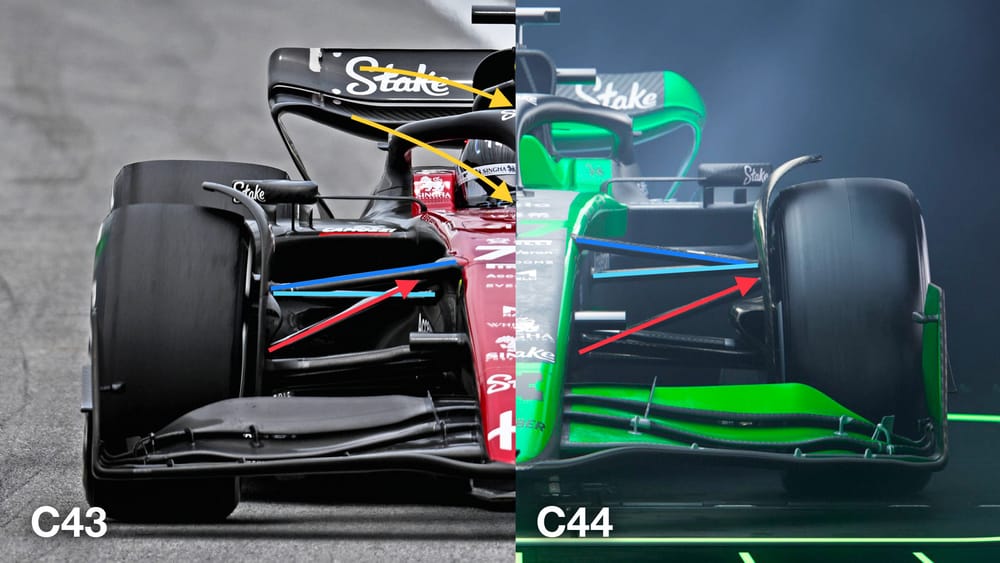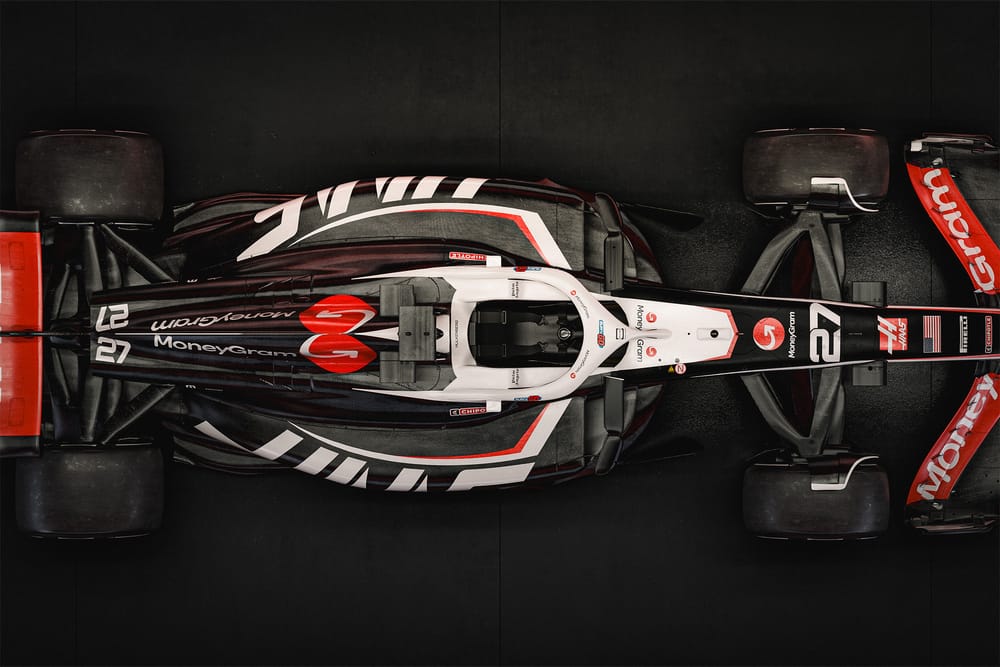Up Next

Sauber once again has a new name (Stake) and this season is now surely the start of ramping up to become Audi's Formula 1 factory effort from 2026. Whatever progress the team has made with its new C44 is a crucial foundation for that.
There have been glimmers of hope every now and again for this team over the years, but its best seasons were as the BMW works team from 2006-09.
Recent seasons have been a struggle, despite the strong start to the new regulations in 2022, but getting the might of Audi fully involved will change everything. There are still a couple of years to prove it is capable before it becomes a true Audi works team in 2026, though.
So now, it’s all about strengthening and making a step forward in 2024. Sauber uses the same engine as the Ferrari works team and customer Haas, so the test this year is to show that the chassis direction required is fully understood with what is described as an “ambitious” car.
Let’s take a look at the launch car, with the proviso that we can only comment on what has been presented so far. After all, some say F1 is all smoke and mirrors and I think Sauber, with its new Stake deal, agrees.
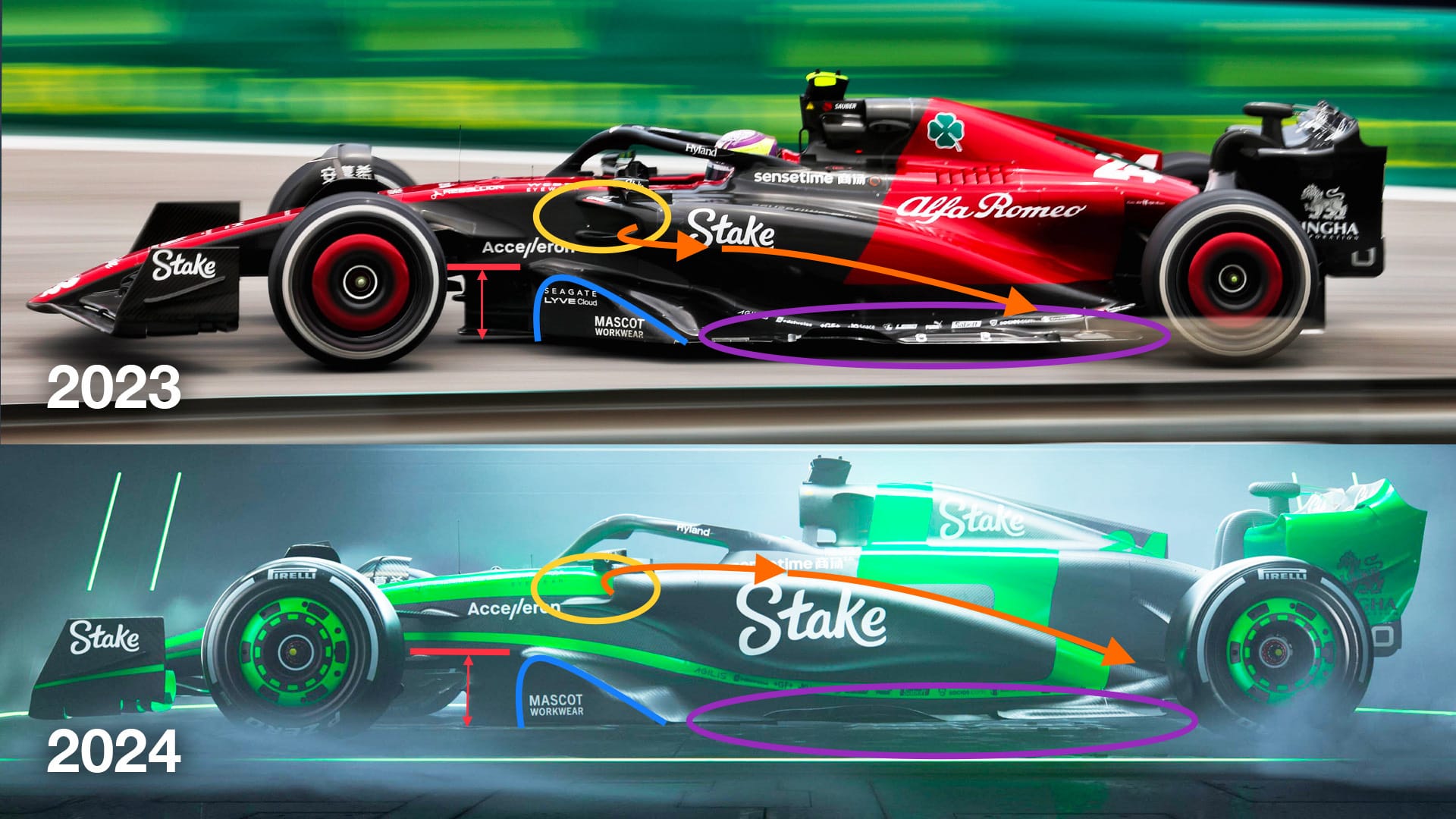
This side view shows Sauber has, unsurprisingly, now incorporated the Red Bull-style radiator inlet (yellow ellipse) as opposed to the 2023 Ferrari version.
This controls the airflow that spills out of the radiator inlet duct at high speeds and invites it to travel over the upper sidepod surface. That means it doesn’t compromise or affect the consistency of the airflow going through the sidepod undercut (orange line) into the coke bottle area.
The leading edge of the underfloor (red line and arrow above) shows that this area is of similar height and the outer floor edge splitter (blue line) has a very similar profile. The outer edge of the floor (magenta ellipse) has very little detail, something I'm sure that will change for the shakedown.
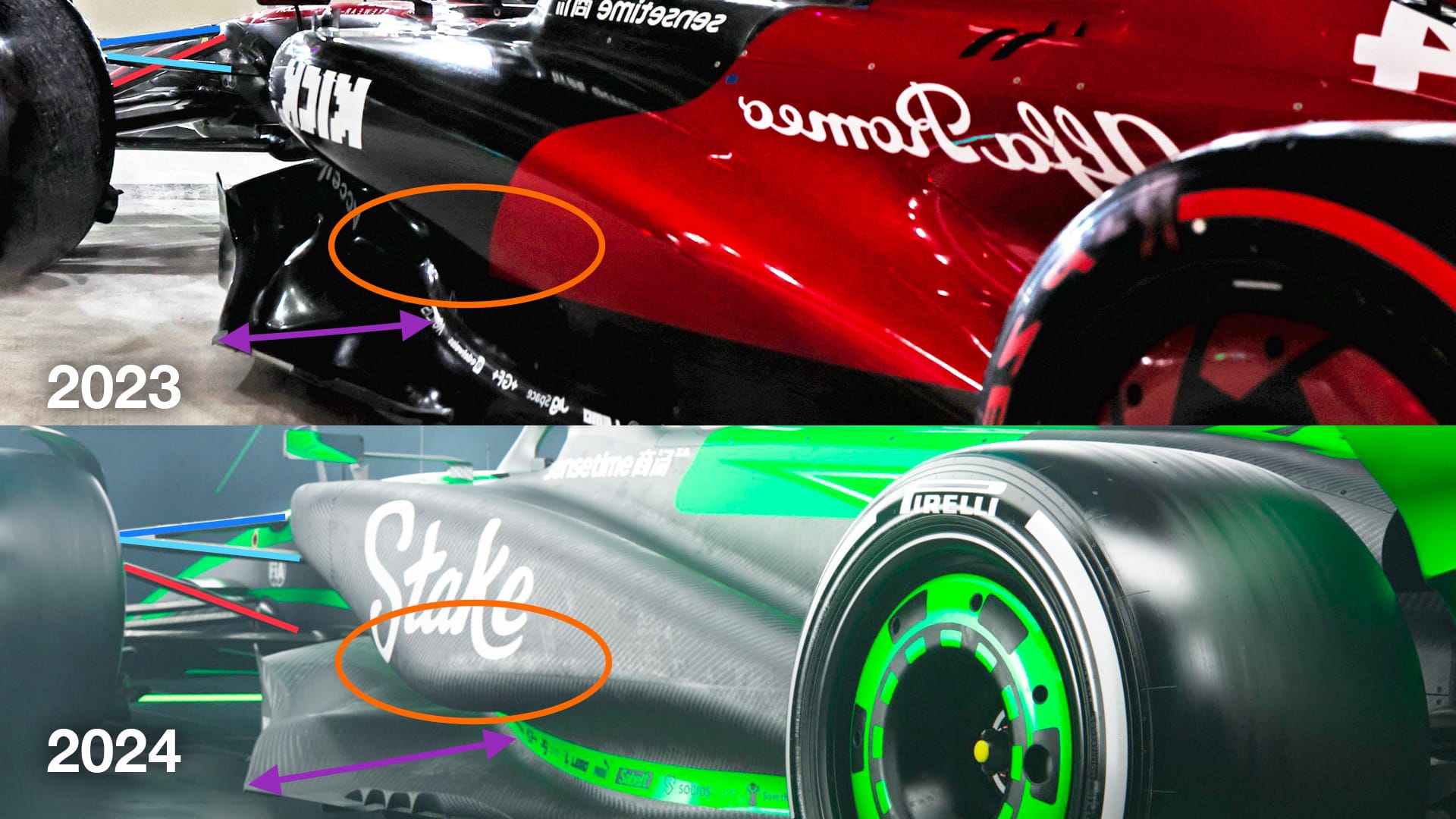
Front suspension-wise, Sauber has gone from a pushrod operation to a pullrod (red line). James Key, Sauber’s new technical director, has long been a fan of this and introduced it at McLaren when these new regulations first came in in 2022, as did Adrian Newey at Red Bull.
With the pullrod suspension layout it is easier to increase the rising rate effect on the front suspension. Having a high rising rate allows you to run the car on softer springs for slow-speed corners (high ride height) but using that rate changes the car and it becomes stiff enough so it's more stable at high speed (low ride height) and under braking to give the driver more confidence.
With the top and bottom wishbones being as high as possible, using a pullrod increases the angle between the two, giving you a reduction in the load in the pullrod.
It also means that the lower wishbone only really has to cope with the braking and cornering forces and doesn’t have to react to the tension load generated by the pushrod load.
The top wishbone geometry (dark blue and light blue lines below) is very similar to last year’s car as far as anti-dive is concerned.
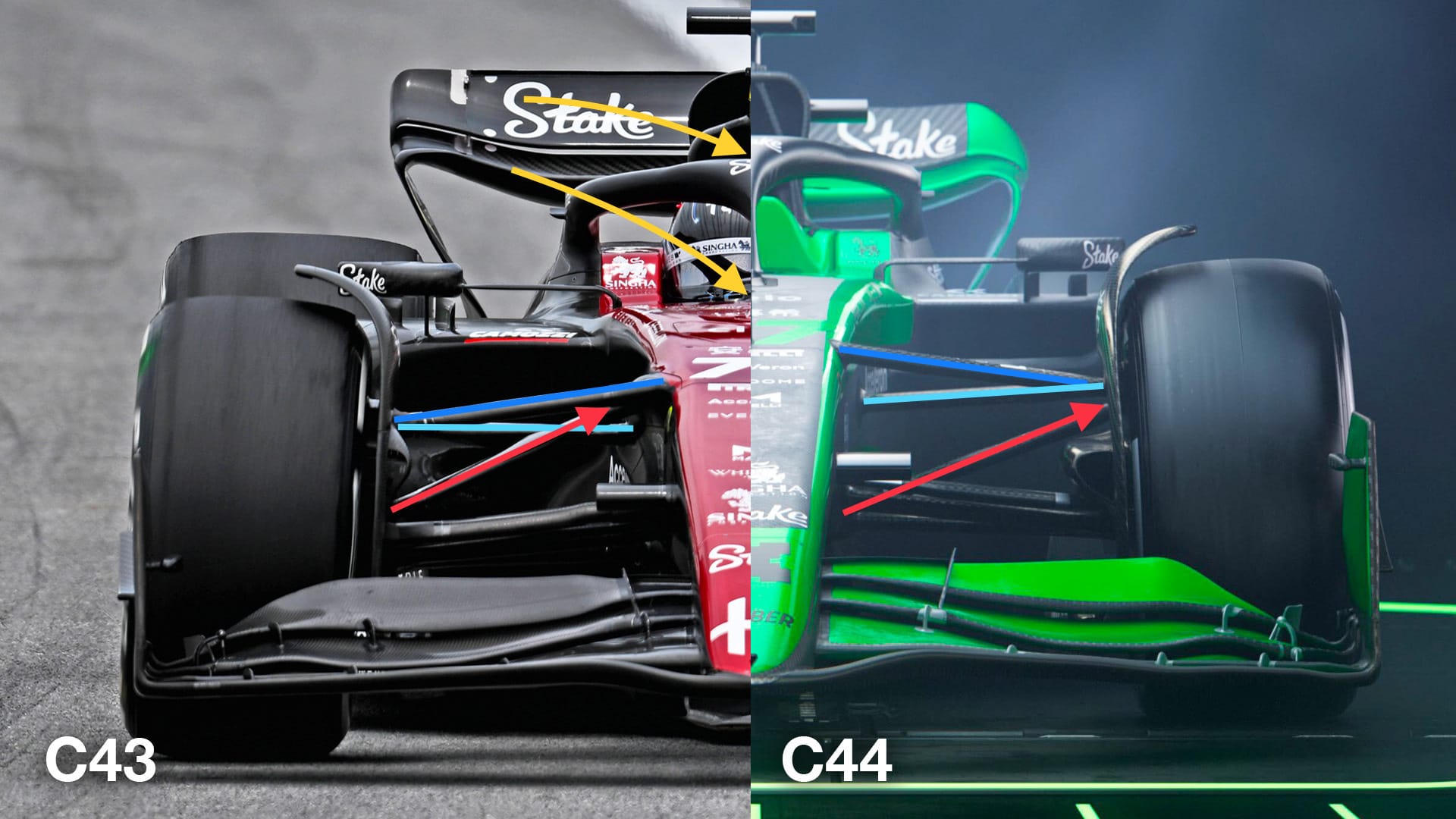
The height difference is a bit of an optical illusion because the image is at a slightly different angle (yellow arrows), which is highlighted by the difference in height of the chassis and halo.

Using these shots from behind again, we can see the front upper wishbone geometry (dark and light blue lines) and the amount of anti-dive Sauber is using. Other than Red Bull, it was one of the only teams to run these extreme front anti-dive and rear anti-lift characteristics. We talk about this being to control the aerodynamic platform, but you need that aerodynamic platform before you can use the tools to control it.
You can also see that the pullrod system, as opposed to the pushrod system (red line), is less cluttered and at a better working angle, which reduces loads.
This body bulge (orange ellipse) is probably created to house the cooling system but it is a little confusing. Sauber appears to have increased the initial sidepod undercut (magenta arrowhead line) while also increasing the overhang on it. The only positive reason I can see for this is that it allows the Stake decal to be fitted on a more flat surface…

These images show a simple comparison between what could be called a Ferrari eyelet radiator inlet (left) and a 'duckbill' Red Bull radiator inlet (right). Again, the orange arrows illustrate where the spillage from the radiator inlet for both systems would travel. The Ferrari style could very easily disturb the consistency of the airflow going through the sidepod undercut.
After the accident at Silverstone in 2022 when Zhou Guanyu flipped and the rollover bar structure failed, I was surprised that Sauber continued with the single spike design last year. However, it does look like it's now gone to the more common A-frame structure design. That should be a lighter solution and this high up that has a reasonable effect on the centre of gravity height.

There must be more to it than these two supports (red arrows) but it’s difficult to see what is inside the intake. I would imagine that the complete carbon structure (orange lines) from the top of the chassis upwards works as one to distribute the rollover bar test loads into the chassis.
To use that old saying, ‘what we have seen is only what they have shown us’ and I’m sure when the car runs for the first time on February 9 there will be many differences.
The key is that the team needs to focus on improving in-season development to give Audi confidence that it has made the correct decision to partner with Sauber from 2026.

